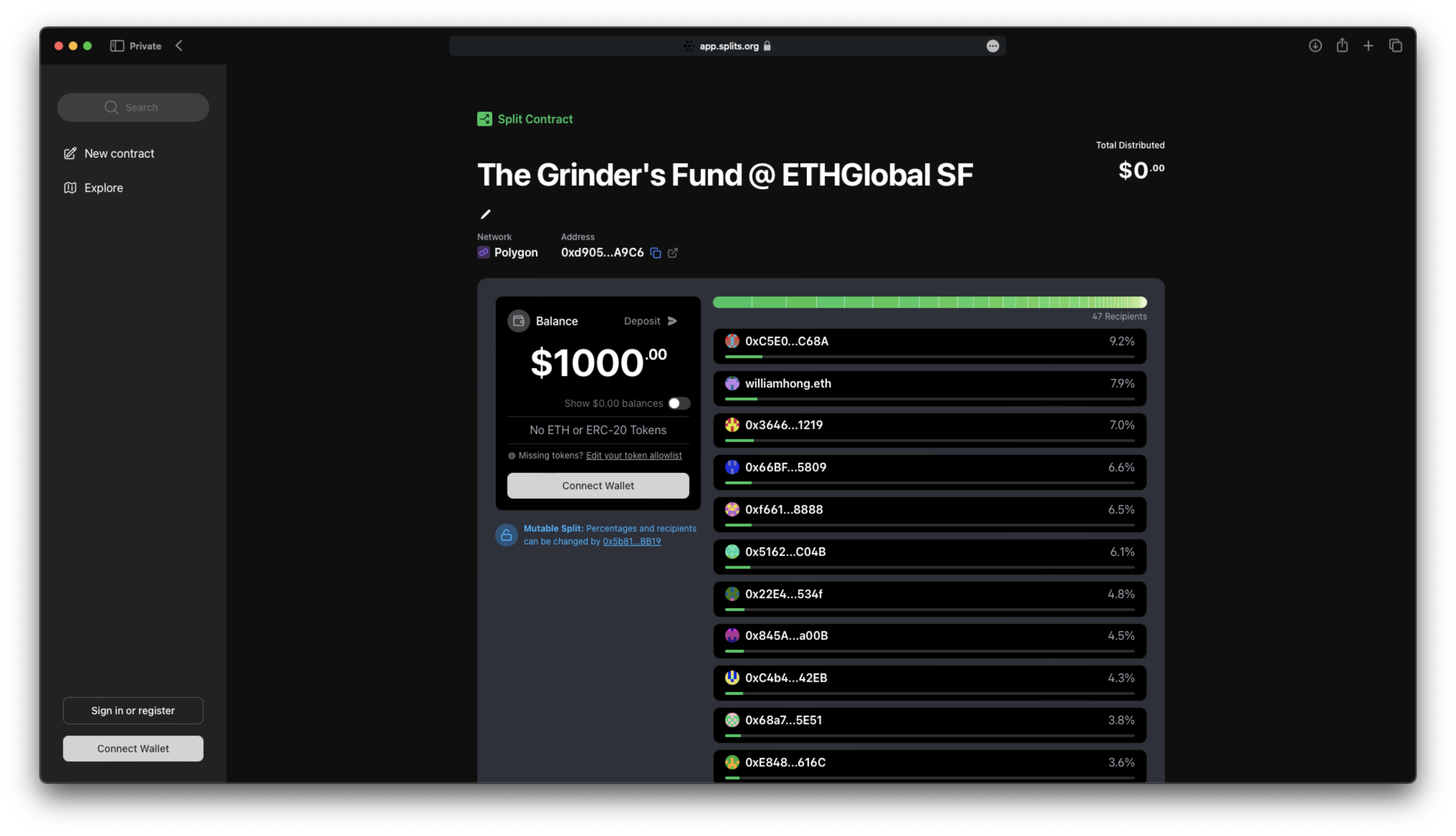Auto Retro Funding: Continuous, Simple, Automatic
Open-source projects power innovation across industries, yet they often face a significant challenge: securing sustainable funding. Retroactive funding offers a promising solution by rewarding impactful contributions based on past results, but today’s retro funding rounds are complex, time-consuming, and infrequent, making them unreliable sources of support for public goods.
This inspired us to build AutoRF during ETHGlobal San Francisco 2024. AutoRF makes retroactive funding continuous, simple, and scalable by removing the barriers that hold current models back.
The Problem: Retro Funding Rounds Today
Retroactive funding is a fairer way to reward contributors since it evaluates impact after the fact. But running these rounds today is labor-intensive and hard to scale, limiting their potential.
Take Optimism’s Retro Funding as an example. Each round involves hundreds of hours of scoring and deliberation by voters, and even then, fair fund allocation isn’t guaranteed (source). Human scoring is not only tedious but can also create perverse incentives, like prioritizing popularity over true merit.
This overhead discourages broader adoption, leaving many impactful public goods underfunded while making retro funding mechanisms unreliable and difficult to sustain.
Introducing AutoRF
AutoRF is designed to automate retroactive funding, combining the transparency of on-chain systems with the flexibility of off-chain calculations to deliver a scalable, fair solution. It empowers funders to create data-driven funding pools with minimal effort while ensuring contributors are rewarded accurately.
How AutoRF Works
- Define Funding Pools: Funders set up pools and define measurable metrics, like GitHub activity.
- Track Contributions: AutoRF tracks contributions automatically, gathering data on metrics like commit timing, frequency, and repository engagement.
- Reward Contributors: Rewards are distributed transparently using smart contracts, with metrics recalculated continuously.
Unlike fully on-chain solutions, AutoRF keeps calculation logic off-chain. This approach allows flexibility to refine metrics over time and helps mitigate gaming while maintaining trust and transparency through on-chain reward distribution.

The Grinder's Fund x Polygon
At ETHGlobal SF 2024, we showcased AutoRF with The Grinder’s Fund, a live retro funding pool for hackathon participants. Sponsored by Polygon and Dabl Club, this fund distributed $1,000 USD to reward the hardest-working teams.
The Grinder’s Fund evaluated GitHub activity to calculate impact, analyzing metrics like commit size, timing, and frequency. Over 60 projects, with roughly 300 participants, signed up by Sunday morning. This real-world test demonstrated AutoRF’s scalability and efficiency. The final distribution is available on the Splits website.

Why AutoRF Matters
AutoRF lowers the barriers to retroactive funding by reducing overhead and complexity. By making these processes automatic, funders can create sustainable, merit-based funding systems without the logistical challenges of traditional retro rounds.
This system not only benefits funders but also gives contributors consistent incentives for impactful work, fostering collaboration and innovation across ecosystems.
A Vision for the Future
AutoRF is a step toward a future where public goods funding is seamless and reliable. Inspired by Karl’s concept in "Ether’s Phoenix", which equates impact with profit, AutoRF creates a system where funding is predictable, scalable, and fair.
As AutoRF evolves, we aim to scale its impact across different domains, from open-source software to education and climate initiatives, making funding continuous, automatic, and accessible.
Public goods should not just survive; they should thrive.

